
|
|
ENCYCLOPEDIA OF RADIO ELECTRONICS AND ELECTRICAL ENGINEERING Electronic metal detector. Encyclopedia of radio electronics and electrical engineering
Encyclopedia of radio electronics and electrical engineering / Indicators, detectors, metal detectors The metal detector is a relatively simple device, the electronic circuit of which provides good sensitivity and stability. A distinctive feature of such a device is its low operating frequency. The inductors of the metal detector operate at a frequency of 3 kHz. This provides, on the one hand, a weak response to unwanted signals (for example, signals that occur in the presence of wet sand, small pieces of metal, etc.), and on the other hand, good sensitivity when searching for hidden water pipes and central heating lines, coins and other metal objects. Scheme implementation and customization require appropriate skill and experience. The block diagram of the metal detector is shown in fig. one. The metal detector generator excites oscillations in the transmitting coil at a frequency of about 3 kHz, creating an alternating magnetic field in it. The receiving coil is located perpendicular to the transmitting coil in such a way that the magnetic lines of force passing through it will create a small EMF. At the output of the receiving coil, the signal is either absent or very small. A metal object, falling into the field of the coil, changes the value of the inductance, and an electrical signal appears at the output, which is then amplified, rectified and filtered. Thus, at the output of the system we have a constant voltage signal, the value of which slightly increases when the coil approaches a metal object. This signal is fed to one of the inputs of the comparison circuit, where it is compared with the reference voltage applied to its second input. The reference voltage level is adjusted in such a way that even a small increase in the signal voltage leads to a change in the state at the output of the comparison circuit. This, in turn, actuates an electronic switch, resulting in an audible signal to the output amplifying stages, alerting the operator to the presence of a metal object. The circuit diagram of the metal detector is shown in fig. 2. The transmitter, consisting of a transistor VT1 and associated elements, excites oscillations in the coil L1. The signals arriving at the L2 coil are then amplified by the D1 chip and rectified by the D2 chip, which is included in the amplitude detector circuit. The signal from the detector goes to capacitor C9 and is smoothed by a low-pass filter, which consists of resistors R14, R15 and capacitors C10 and C11. Then the signal is fed to the input of the comparison circuit D3, where it is compared with the reference voltage set by the variable resistors RP3 and RP4. Variable resistor RP4 is used for quick and coarse adjustment, while RP3 provides fine adjustment of the reference voltage. The generator, assembled on a transistor with one VT2 junction, operates in continuous mode, however, the signal generated by it enters the base of the VT4 transistor only when the VT3 transistor closes, since, being in the open state, this transistor shunts the output of the generator. When a signal is received at the input of the D3 microcircuit, the voltage at its output decreases, the transistor VT3 closes and the signal from the transistor VT2 through the transistor VT4 and the volume control RP5 enters the output stage and loudspeaker. The circuit uses two power supplies, which eliminates the possibility of any feedback from the circuit's output to its sensitive input. The main circuit is powered by an 18 V battery, which is reduced to a stable voltage of 4 V using the D12 chip. At the same time, a decrease in battery voltage during operation of the circuit does not change the setting. The output stages are powered by a separate 9V power supply. The power requirements are quite low, so three batteries can be used to power the unit. The output stage battery does not require a special switch, since the output stage does not draw current when there is no signal. A metal detector is a rather complex device, so the assembly of the circuit should be carried out cascading with a thorough check of each cascade. The circuit is mounted on a board, on which there are 24 copper strips with 50 holes in each with a pitch of 2,5 mm. First of all, 64 cuts are made in the strips and three mounting holes are drilled. Then, 20 jumpers, pins for external connections, and two pins for capacitor C5 are installed on the back of the board.
Then capacitors C16, C17 and chip D4 are installed. These elements form a power source with a voltage of 12 V. This stage is checked by temporarily connecting a battery with a voltage of 18 V. In this case, the voltage across the capacitor C16 should be 12 + - 0,5 V. After that, the elements of the output stage are mounted: resistors R23-R26 , capacitors C14 and C15 and transistors VT4-VT6. It should be noted that the case of the VT6 transistor is connected to its collector, therefore, contact of the case with neighboring elements and jumpers is unacceptable. Since the output stage draws no current in the absence of a signal, it is checked by temporarily connecting a loudspeaker, a variable resistor RP5 and a 9 V battery. Then resistors R20-R22 and transistor VT2 are installed, forming a sound signal generator. When two power sources are connected, the sound background is heard in the speaker, which changes with the position of the volume control knob. After that, resistors R16-R19, capacitor C12, transistor VT3 and chip D3 are mounted on the board. The operation of the comparison circuit is checked as follows. Variable resistors RP3 and RP3 are connected to the measuring input D4. This input is formed using two 10 kΩ resistors, one of which is connected to the positive +12 V supply rail, and the other to the zero rail. The second terminals of the resistors are connected to terminal 2 of the D3 chip. The jumper from this pin serves as a temporary connection point. With coarse tuning (both batteries are on), which is carried out by a variable resistor RP4, in a certain position, the sound signal is interrupted, while fine tuning with a variable resistor RP3 should result in a smooth change in the signal near this position. When these conditions are met, they proceed to install resistors R6-R15, capacitors C6-C11, diode VD3 and microcircuits D1 and D2. Turning on the power source, first check the presence of a signal at the output of the D1 chip (pin 6). It should not exceed half the value of the power supply (approximately 6V). The voltage across capacitor C9 should not be different from the output voltage of this IC, although AC noise may cause a slight increase in this voltage. Touching the input of the microcircuit (the base of the capacitor C6) with your finger causes an increase in voltage due to an increase in the noise level. If the tuning knobs are in a position where there is no audible signal, touching capacitor C6 with your finger causes the signal to appear and disappear. This concludes the preliminary check of the performance of the cascades. The final check and adjustment of the metal detector are carried out after the manufacture of the inductors. After a preliminary check of the cascades of the circuit, the remaining elements are installed on the board, with the exception of the capacitor C5. The variable resistor RP2 is temporarily set to the middle position. The board is attached to the L-shaped aluminum chassis through plastic washers (to eliminate the possibility of a short circuit) using three screws. The chassis is fixed in the control panel body with two bolts that hold two clamps designed to fasten the control panel body to the search bar. The side of the chassis secures the power supplies to the chassis. When assembling the remote control, make sure that the switch leads on the reverse side of the variable resistor RP5 do not touch the board elements. After drilling a rectangular hole, the speaker is glued. The stem and connecting parts that form the finder head holder are made of plastic tubes with a diameter of 19 mm. The finder head itself is a plate with a diameter of 25 cm, made of durable plastic. The inside of it is carefully cleaned with sandpaper, which ensures good bonding with epoxy. The main characteristics of a metal detector largely depend on the coils used, so their manufacture requires special attention. Coils having the same shape and dimensions are wound on a D-shaped circuit, which is formed from pins fixed on a suitable piece of the board (Fig. 4).
Each coil consists of 180 turns of 0,27 mm enameled copper wire, tapped from the 90th turn. Before removing the coils from the pins, they are tied up in several places. Then each coil is wrapped with a strong thread so that the turns fit snugly together. This completes the production of the transmitting coil. The receiving coil must be equipped with a screen. The shielding of the coil is provided as follows. First, it is wrapped with wire, and then wrapped with a layer of aluminum foil, which is again wrapped with wire. This double winding guarantees good contact with the aluminum foil. There should be a small gap or gap in the wire windings and in the foil, as shown in fig. 8, preventing the formation of a closed loop around the circumference of the coil.
Coils made in this way are fixed with clamps at the edges of a plastic plate and connected to the control unit using a four-core shielded cable. The two center taps and the screen of the receiving coil are connected to the neutral bus through shielding wires. If you turn on the device and the radio located near the coil, you can hear a high-pitched whistle (at the frequency of the metal detector), due to the interference of the audio signal in the radio. This indicates the health of the metal detector generator. In this case, it does not matter what band the radio is tuned to, so any cassette recorder can be used instead to check it. The place of the working position of the coils is determined either by the output signal of the metal detector, which should be minimal, or by the readings of a measuring device (voltmeter) connected directly to the capacitor C9. The second option for matching coils is much simpler. The voltage across the capacitor should be approximately 6 volts. After that, the outer parts of the coils are glued with epoxy, and the inner parts, passing through the center, are left loose, allowing for final adjustment. The final adjustment consists in placing the loose parts of the coils in such a position that non-ferrous objects such as coins cause a rapid increase in the output signal, and other objects cause a slight decrease in it. If the desired result is not achieved, it is necessary to swap the ends of one of the coils. It should be remembered that the final adjustment or adjustment of the coils should be carried out in the absence of metal objects. After installation and strong fastening, the coils are covered with a layer of epoxy resin, then fiberglass is applied to them and the whole thing is sealed with epoxy resin. After the search head is made, the capacitor C5 is built into the circuit, the variable resistor RP1 is set to the middle position, and the variable resistor RP2 is adjusted to the minimum output signal. At the same time, on one side of the middle position, the variable resistor RP1 provides recognition of steel objects, and on the other side - objects made of non-ferrous metal. It should be borne in mind that with each change in the nominal value of the resistance of the variable resistor RP1, it is necessary to re-configure the device. In practice, the metal detector is a light, well-balanced, sensitive device. during the first few minutes after turning on the device, there may be a zero level imbalance, but after a while it disappears or becomes insignificant. Metal detector elements Author: Evgeny Lisovy, Ukraine, Uman; Publication: N. Bolshakov, rf.atnn.ru
Artificial leather for touch emulation
15.04.2024 Petgugu Global cat litter
15.04.2024 The attractiveness of caring men
14.04.2024
▪ Solar mounting structures made from recycled wind turbine blades ▪ Push-button phone Lava with a pulse and pressure sensor ▪ Hyperactivity appears due to attention deficit
▪ section of the site Radioelectronics and electrical engineering. Article selection ▪ article What is the Milky Way? Detailed answer ▪ Article Stretching. Health care
Comments on the article: Igor I wonder if anyone made a normal seal in a watering can?
Home page | Library | Articles | Website map | Site Reviews www.diagram.com.ua |






 Arabic
Arabic Bengali
Bengali Chinese
Chinese English
English French
French German
German Hebrew
Hebrew Hindi
Hindi Italian
Italian Japanese
Japanese Korean
Korean Malay
Malay Polish
Polish Portuguese
Portuguese Spanish
Spanish Turkish
Turkish Ukrainian
Ukrainian Vietnamese
Vietnamese
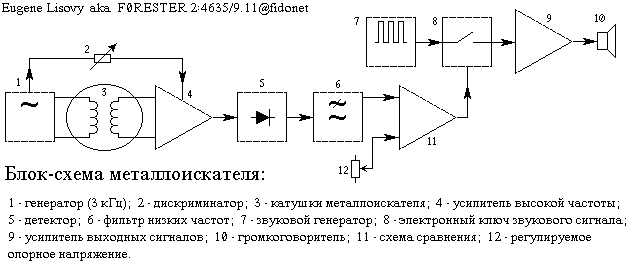
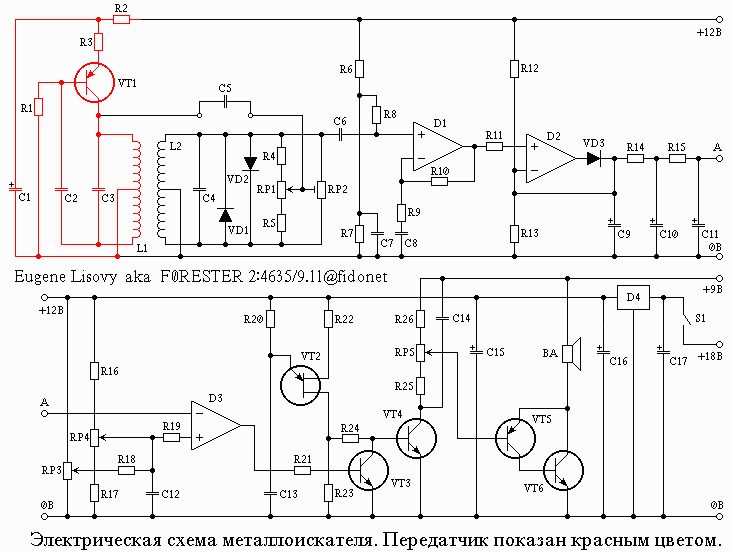
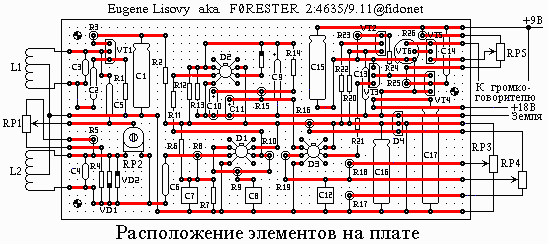
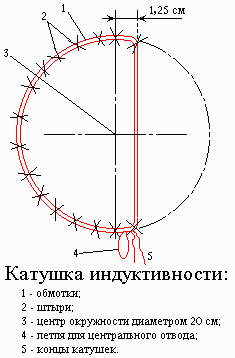
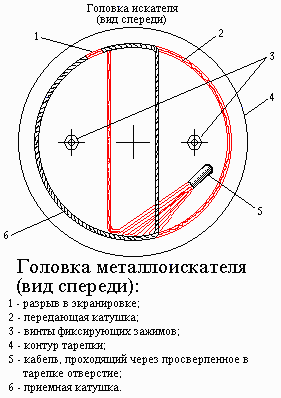
 Leave your comment on this article:
Leave your comment on this article: